In December of the year Mau Than (1428), King Le Loi ordered the construction of Kinh Thien Palace, Can Chanh Palace and Van Tho Palace. Kinh Thien Palace was used as the place for court meetings.
Unique, original artifact
Kinh Thien Palace is the most important palace in the palace system in the Thang Long Forbidden City of the Le Dynasty. This is the most important palace, where the most solemn ceremonies of the court are held, where foreign envoys are received and where the court holds court to discuss important national affairs. Kinh Thien Palace is a rare remaining relic of the architecture of the Royal Palace of the Le Dynasty.
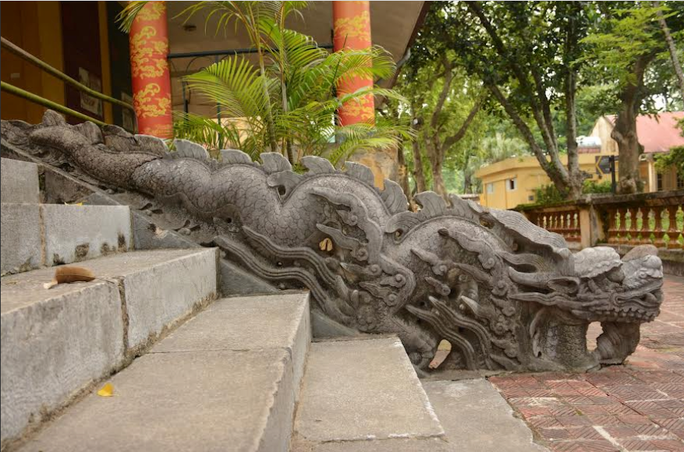
The pair of steps have the same structure and decorative patterns, including the dragon statue on the upper part and the decorative motifs on the outside of the step. The dragon is carved in a moving posture from top to bottom along the length of the step, the dragon's head is raised high, the forehead is bulging, the cheeks are small, the nose is like a lion's, the eyes are round, the ears are animal-like, the mouth is long, the tongue is short, the fangs are sharp, the mouth holds a pearl, the horn has long branches, the mane has 4 curved stripes that are tilted backwards, the body is round and fat with scales, curved in seven sinusoidal curves, and the belly has fins.
The dragon has two large, strong legs, five toes with joints, and five sharp claws. The front legs reach up to grab the beard, the back legs are in a bent elbow position, kicking hard to pull the body forward. The elbows have hair, long hair, shaped like a fire knife running towards the back. Close to the body are clusters of clouds extending in the shape of knives, the embossed cloud knives are winding, with waves in the middle, the tip of the elongated flame transforms into the shape of a knife spear.
The outside of the triangular railing has a border carved with half lotus flowers, one after another, and the corner formed by the two ends of the petals is carved with half chrysanthemums. Inside the right triangle frame, there is a carving of a fish transforming into a dragon in a lotus pond. In the pond, there are mandarin ducks swimming on the waves, the wave clusters have 3 silver waves. Floating on the waves is a lotus bud - flower - leaf pattern, on top is a cluster of clouds.
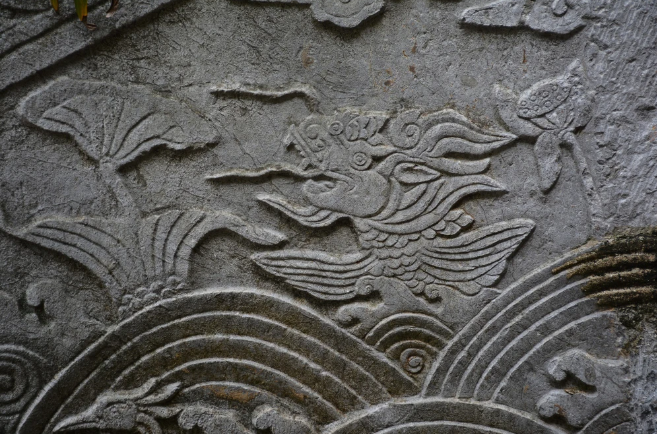
Compared to the front dragon railing, there is a big change in shape and detail. The dragon still has 7 curves but the tail is more elongated, the fire knife has formed a sharp knife shape with a high middle edge, beveled to both sides, the tip is long and tapered, the tip is slightly blunt. The design of fish transforming into dragon, mandarin ducks, lotus flowers and clouds are carved flat creating different depths, overlapping layers unlike the front stone railing.
Associate Professor Tong Trung Tin, Chairman of the Vietnam Archaeological Association, said that the Kinh Thien Palace citadel from the Le Trung Hung period is an original, unique artifact associated with the Kinh Thien Palace relic, a particularly important relic of the World Cultural Heritage Site of the Central Area of the Imperial Citadel of Thang Long - Hanoi.
Dragon platform associated with many important events
Historical sources, especially official records, show that in December of the year Dinh Mui (1427), after defeating the Ming army and forcing them to withdraw their troops, the 20-year resistance war against the Ming ended. In April of the year Mau Than (1428), King Le Loi moved from the palace in Bo De to Dong Do citadel. On April 15 of the same year, he officially ascended the throne as Emperor, took the reign name Thuan Thien, restored the national name Dai Viet, chose Dong Do as the capital (in 1430 it was changed to Dong Kinh), issued a general amnesty, and established the Le dynasty.
In December of the year Mau Than (1428), the king ordered the construction of Kinh Thien Palace, Can Chanh Palace and Van Tho Palace. Kinh Thien Palace was used as the place for holding court meetings, Can Chanh Palace was used as the place for regular court meetings, that is, the place for working and listening to daily political affairs; Van Tho Palace was used as a place for resting, in addition, there were left and right palaces on both sides.
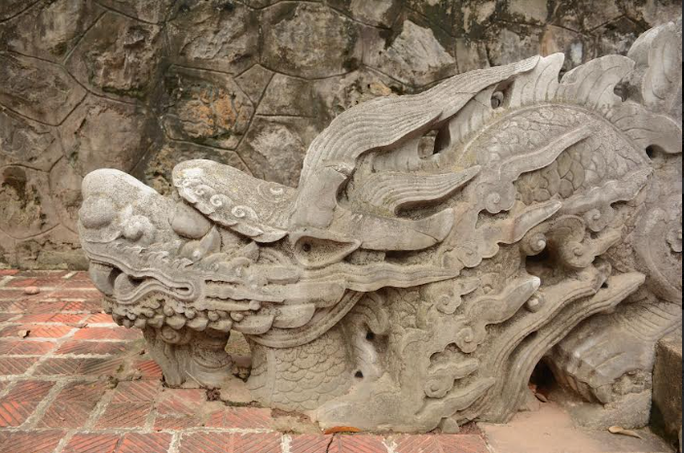
On August 15, Dinh Hoi year, Quang Thuan 8th year (1467), King Le Thanh Tong ordered "stone railings to be erected at Kinh Thien palace and a small palace to be built at Giang Vo yard". The stone railings that King Le Thanh Tong ordered to be erected at Kinh Thien palace in 1467 were a set of 4 steps forming 3 entrances in the front, which are still the entrances to Kinh Thien palace from the front. These steps have been recognized as National Treasures.
In 1816, due to the deterioration of Kinh Thien Palace and its rotten wood, King Gia Long ordered the demolition of Kinh Thien Palace, but the foundation of Kinh Thien Palace was kept intact. After that, the Nguyen Dynasty built Long Thien Palace on the foundation of Kinh Thien Palace built by the Le Dynasty earlier.
Historical records and archaeological discoveries at Kinh Thien show that in front of Kinh Thien Palace is Long Tri courtyard, behind is Can Chanh Palace. The results of archaeological excavations in 2011 at the front and back passages of Kinh Thien Palace have provided authentic evidence to clarify the nature, age and changes of the area in front and behind Kinh Thien Palace in general, and the passages connecting Kinh Thien Palace with Long Tri courtyard in front in particular.
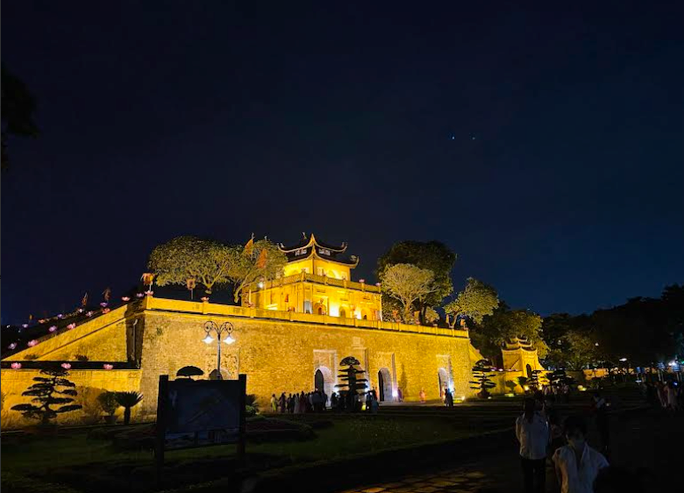
According to the results of excavation and research, the steps and ramps of the front entrance have been rearranged, but the ramps are built on the brick floor of the Le Trung Hung period. Archaeological evidence also shows that the ramps of the first ramp are placed on a solid foundation layer compacted with bricks and tiles. Underneath the Le Trung Hung period foundation layer, there is another foundation layer, which is believed to be the foundation layer of the Le So period.
According to experts, the second level of the Kinh Thien Palace was built during the Le Trung Hung period, equivalent to the period of raising the Long Tri courtyard, later than the first level of the palace, but it is an inseparable element, closely associated with the Kinh Thien Palace from the Le Trung Hung period to the present.
The Kinh Thien citadel of the Later Le Dynasty has a "fate" closely linked to the changes of Kinh Thien Palace in history. It is a vivid testament to the changes of Kinh Thien Palace relic in the history of the relic from the 17th century to the present, especially in the period from the second half of the 19th century to the middle of the 20th century.
Unique, different
The second set of ramparts of Kinh Thien Palace is the only remaining rampart of the royal palace architecture of the Later Le Dynasty.
The size, structure and decorative patterns of the steps are not found or repeated in other relics and artifacts of the same type. Some researchers believe that the second step of Kinh Thien Palace has many similarities with the Co Loa step, but after careful consideration, most researchers agree that the stone steps in Co Loa only have similarities in shape, and the decorative patterns are much different from the second step of Kinh Thien Palace.
The carvings of fish transforming into dragons on the two outer sides of the steps are a familiar theme, but the way they are expressed is unique and different. The theme of fish transforming into dragons is often associated with the scene of crossing the five gates. Here, the carvings depict fish transforming into dragons in a lotus pond. Documents show that this theme was also carved on the steps of the Nam Giao altar in Thang Long during the Le Trung Hung period. However, the steps of the Nam Giao altar no longer exist.
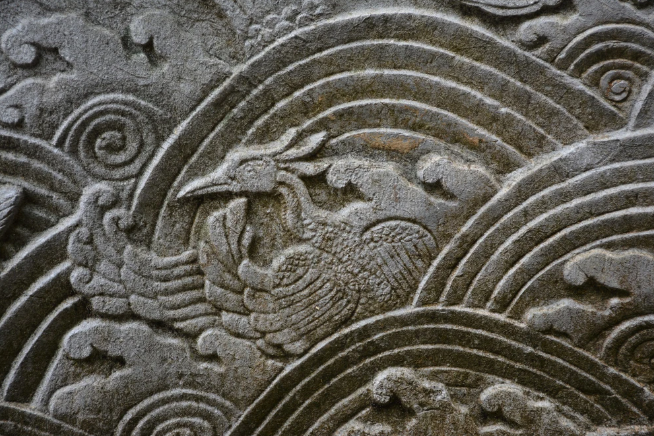
There are also documents stating that the architectural steps of Hoang Cao Khai's tomb copied the design of this carving. The survey results at the site of Hoang Cao Khai's tomb in Thai Ha hamlet showed that this was a mistake, the steps of Hoang Cao Khai's tomb did not copy the design of this carving. Thus, with the existing documents, it can be affirmed that the carving of the decorative pattern of fish transforming into dragons on the two outer sides of the steps is a unique design.
According to experts, this set of steps also has a unique historical and cultural value expressed in the symbolism of the images and motifs on the set of steps. The dragon image is an image that represents the king and the king's power.
The dragon statue with strict standards of head structure with a high hump to show the dragon's self-generating ability has shown the strict standards of Confucianism. The fish-shaped design also reflects the Confucian ideology associated with the philosophy of hard work to become talented. The variation of a familiar classic theme gives the decorative design a new shade and is imbued with Vietnamese culture, accepting and transforming.